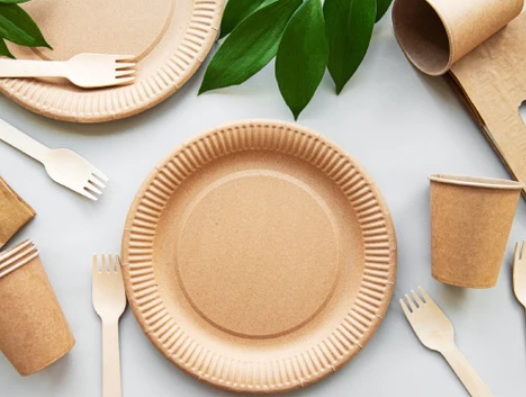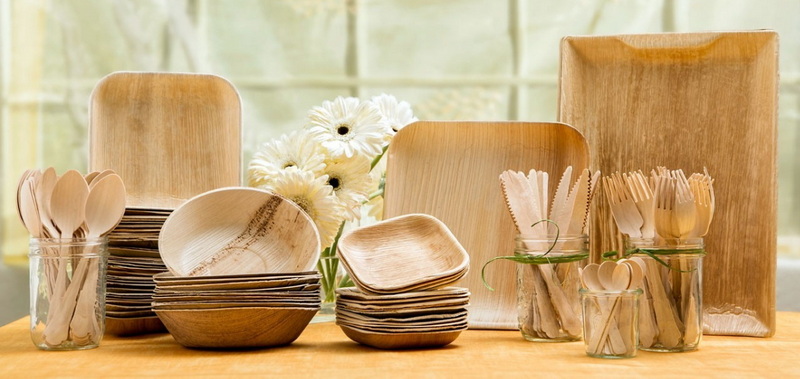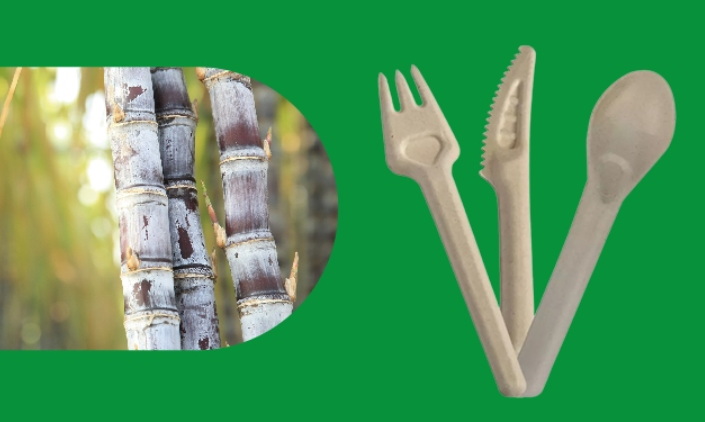
Content Menu
● Introduction to Eco-Friendly Disposable Cutlery
>> Types of Eco-Friendly Disposable Cutlery
● Benefits of Eco-Friendly Disposable Cutlery
>> Environmental Benefits
>> Health Benefits
>> Economic Benefits
● Where to Buy Disposable Cutlery
● Tips for Choosing the Right Eco-Friendly Cutlery
● Implementing Sustainable Practices
● Conclusion
● FAQ
>> 1. What are the most common materials used for eco-friendly disposable cutlery?
>> 2. How does eco-friendly cutlery benefit the environment?
>> 3. Are eco-friendly disposable cutlery options more expensive than traditional plastic cutlery?
>> 4. Can eco-friendly cutlery be reused?
>> 5. How can I ensure that the eco-friendly cutlery I buy is genuinely sustainable?
In recent years, the world has witnessed a significant shift towards sustainability, with eco-friendly disposable cutlery emerging as a crucial alternative to traditional plastic utensils. The environmental impact of plastic waste is profound, contributing to pollution, harming wildlife, and contaminating ecosystems. As consumers become more environmentally conscious, the demand for eco-friendly products has surged. This article will explore the various types of eco-friendly disposable cutlery, their benefits, and most importantly, where to buy disposable cutlery that aligns with sustainable living.

Introduction to Eco-Friendly Disposable Cutlery
Eco-friendly disposable cutlery is made from biodegradable materials such as wood, bamboo, plant fibers, palm leaves, and paper. These materials are sourced from renewable resources and can decompose naturally, reducing plastic waste and the environmental harm it causes. The production of eco-friendly cutlery often involves sustainable practices, ensuring that the entire lifecycle of the product contributes to a healthier planet.
Types of Eco-Friendly Disposable Cutlery
1. Wooden Cutlery: Made from fast-growing trees like birch and bamboo, wooden cutlery is durable and compostable. It offers a natural aesthetic and is suitable for both hot and cold foods. However, it takes longer to decompose compared to other materials, typically requiring 6-12 months in composting systems. Wooden cutlery is also more resistant to heat, making it a popular choice for outdoor events.
2. Bamboo Cutlery: Bamboo is fast-growing and stylish, making it a popular choice for reusable cutlery. However, when used as disposable cutlery, it decomposes quickly, usually within 4-6 weeks. Bamboo cutlery is lightweight and can be used for a variety of dishes, from salads to hot meals.
3. Plant Fibre Cutlery: Made from agricultural by-products like corn starch and sugarcane, plant fibre cutlery is compostable and decomposes rapidly, often within 60 days. This type of cutlery is highly versatile and can be molded into various shapes and sizes, making it suitable for different types of meals.
4. Palm Leaf Cutlery: This type of cutlery offers a natural aesthetic and decomposes quickly, typically within 6-8 weeks. Palm leaf cutlery is made from fallen palm leaves, reducing waste and promoting sustainable forestry practices.
5. Paper Cutlery: Biodegradable and cost-effective, paper cutlery is another sustainable option, though it may not be as durable as other materials. It is often used for lighter meals and snacks.
Benefits of Eco-Friendly Disposable Cutlery
Environmental Benefits
- Reduced Plastic Waste: Eco-friendly cutlery significantly reduces the amount of plastic waste that ends up in landfills and oceans. By choosing biodegradable materials, consumers can help minimize the plastic pollution that harms marine life and contaminates ecosystems.
- Biodegradable: Unlike plastic, eco-friendly cutlery decomposes naturally, returning nutrients to the soil without causing lasting harm. This reduces the need for landfills and helps maintain soil health.
Health Benefits
- Chemical-Free: Unlike traditional plastics, eco-friendly cutlery does not contain harmful chemicals like Bisphenol A (BPA), which can leach into food. This ensures that meals are safer and healthier for consumption.
Economic Benefits
- Sustainable Production: The production of eco-friendly cutlery often requires less energy and resources than traditional plastic manufacturing. This can lead to cost savings and support sustainable economic practices.
- Job Creation: The eco-friendly industry is creating new job opportunities in sustainable agriculture, manufacturing, and waste management, contributing to local economies.

Where to Buy Disposable Cutlery
Finding eco-friendly disposable cutlery is becoming increasingly easier as more retailers and online platforms offer these products. Here are some places where to buy disposable cutlery:
1. Online Retailers: Platforms like Amazon, Walmart, and eBay offer a wide range of eco-friendly disposable cutlery options. You can search for specific materials like "wooden cutlery" or "bamboo cutlery" to find suitable products. Online shopping allows for easy comparison of prices and reviews from other customers.
2. Specialty Stores: Many eco-friendly stores and sustainable living shops carry a variety of biodegradable cutlery options. These stores often provide detailed information about the materials and production processes, helping consumers make informed choices.
3. Local Markets: Some local markets and artisanal fairs may offer handmade or locally sourced eco-friendly cutlery. This can be a great way to support local businesses while adopting sustainable practices.
4. IndiaMART: For those in India, IndiaMART offers a variety of eco-friendly disposable cutleries from verified suppliers. You can find products like sugarcane bagasse cutlery and birchwood cutlery.
5. Source One Eco Friendly: This company specializes in biodegradable disposable cutlery made from natural materials like sugarcane. Their products are compostable and free from harmful chemicals.
Tips for Choosing the Right Eco-Friendly Cutlery
When selecting eco-friendly disposable cutlery, consider the following factors:
- Material: Ensure that the material is biodegradable and sourced from renewable resources.
- Certifications: Look for certifications from reputable organizations that verify the product's sustainability.
- Price: While eco-friendly options might be slightly more expensive, they offer long-term environmental benefits.
- Durability: Choose cutlery that is durable enough for your needs but still compostable.
Implementing Sustainable Practices
Adopting eco-friendly disposable cutlery is just one step towards a more sustainable lifestyle. Here are some additional practices you can implement:
- Composting: Ensure that your eco-friendly cutlery is composted properly to maximize its environmental benefits.
- Reduce Single-Use Items: Limit the use of single-use items whenever possible and opt for reusable alternatives.
- Support Sustainable Brands: Choose brands that prioritize sustainability and environmentally friendly practices.
Conclusion
Eco-friendly disposable cutlery is a crucial step towards reducing plastic waste and promoting sustainability. With various options available, consumers can easily find products that suit their needs by searching where to buy disposable cutlery online or in local stores. By choosing biodegradable materials, we not only reduce environmental harm but also support healthier living practices. As the demand for eco-friendly products continues to grow, it's essential to stay informed about the latest sustainable options and support businesses that prioritize environmental responsibility.

FAQ
1. What are the most common materials used for eco-friendly disposable cutlery?
Eco-friendly disposable cutlery is commonly made from materials like wood, bamboo, plant fibers (such as corn starch and sugarcane), palm leaves, and paper. These materials are biodegradable and sourced from renewable resources.
2. How does eco-friendly cutlery benefit the environment?
Eco-friendly cutlery reduces plastic waste by decomposing naturally, unlike plastic which persists in the environment for centuries. This helps minimize landfill waste and ocean pollution, contributing to cleaner ecosystems.
3. Are eco-friendly disposable cutlery options more expensive than traditional plastic cutlery?
While eco-friendly options might be slightly more expensive than traditional plastic cutlery, they offer long-term environmental benefits and can be cost-effective in reducing waste management costs.
4. Can eco-friendly cutlery be reused?
Some eco-friendly materials, like bamboo, are suitable for reuse. However, most eco-friendly disposable cutlery is designed for single use and is meant to be composted after use.
5. How can I ensure that the eco-friendly cutlery I buy is genuinely sustainable?
Look for certifications from reputable organizations and check the material composition to ensure it is biodegradable and sourced from renewable resources. Also, consider the production process and the company's commitment to sustainability.

















